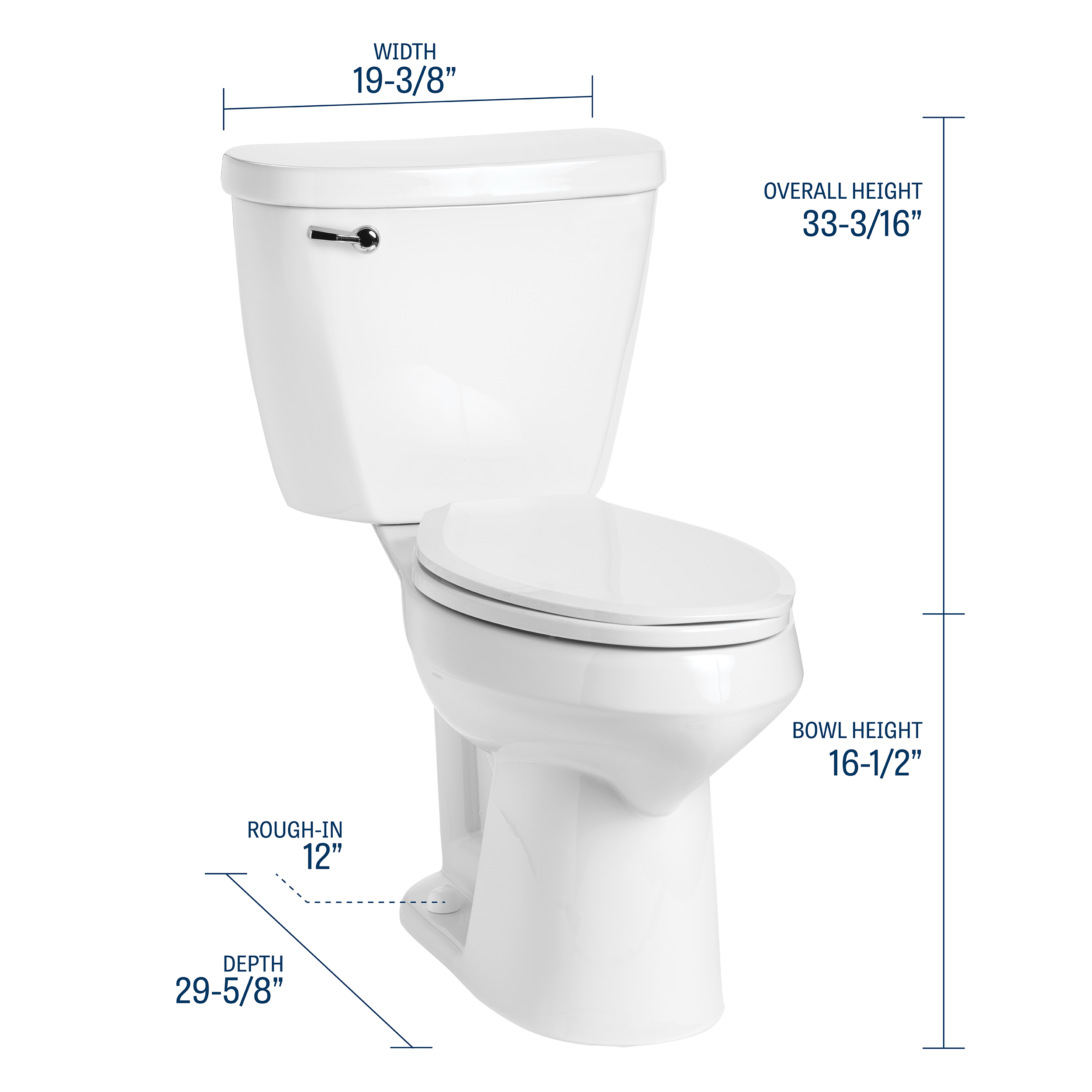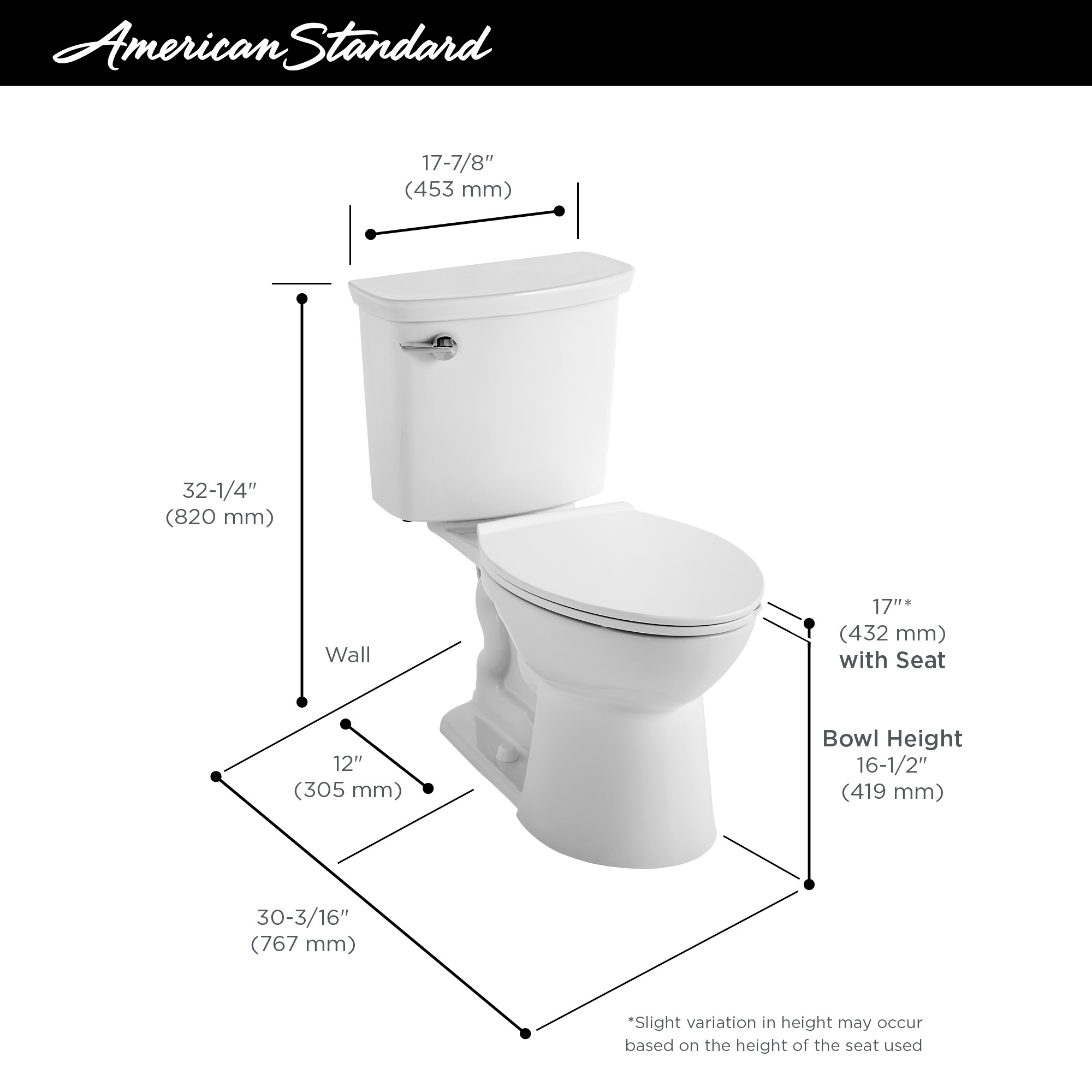Choosing the Right One-Piece Chair Height Toilet

The selection of a one-piece chair height toilet is far from a trivial matter; it’s a decision laden with implications for both personal comfort and long-term household expenses. Navigating the market requires a discerning eye and a critical understanding of the factors influencing both immediate satisfaction and future maintenance. Ignoring these factors can lead to costly replacements and ongoing inconvenience.
Bathroom Size and Style Considerations
Choosing a one-piece chair height toilet necessitates a careful assessment of the bathroom’s dimensions and aesthetic. A larger bathroom offers greater flexibility in selecting toilet size and style, while smaller spaces demand more strategic choices. Consider the toilet’s footprint, the distance required for comfortable access, and how its design integrates with the overall bathroom decor. A sleek, modern toilet might clash jarringly with a traditionally styled bathroom, underscoring the need for careful stylistic coordination. Oversized toilets can create a cramped feeling in smaller bathrooms, hindering movement and creating a visually unbalanced space.
Water Efficiency and its Economic Impact
Water conservation is no longer a luxury; it’s a fiscal imperative. Toilets represent a significant portion of household water consumption, and selecting a model with high water efficiency—measured in gallons per flush (gpf)—is crucial for controlling water bills and minimizing environmental impact. A toilet using 1.28 gpf, for example, will drastically reduce water usage compared to older models using 3.5 gpf or more. This difference translates directly into lower water bills and a smaller carbon footprint, making it a financially and environmentally responsible choice. The cumulative savings over the lifespan of the toilet can be substantial, offsetting the initial higher cost of a more efficient model.
Toilet Flushing Mechanisms: Gravity-Fed vs. Pressure-Assisted
The choice between gravity-fed and pressure-assisted flushing mechanisms significantly impacts performance and longevity. Gravity-fed toilets rely solely on gravity to move water, generally offering a quieter flush but potentially requiring more water for effective cleaning. Pressure-assisted toilets, conversely, use pressurized air to force water through the bowl, resulting in a more powerful and efficient flush, often with less water consumption. However, these systems can be noisier and more prone to mechanical failures, requiring potentially costly repairs. The ideal choice depends on individual priorities: quiet operation versus powerful flushing. The long-term maintenance costs associated with each mechanism should also factor into the decision.
Comparison of One-Piece Chair Height Toilets
The following table compares three popular models, highlighting key features and price points. Note that prices can vary depending on retailer and sales.
| Brand | Model | Features | Price (Approximate) |
|---|---|---|---|
| Toto | Drake II | 1.28 gpf, elongated bowl, chair height, gravity-fed, CeFiONtect glaze | $400 – $600 |
| American Standard | Champion 4 | 1.28 gpf, elongated bowl, chair height, pressure-assisted, EverClean surface | $350 – $500 |
| Kohler | San Souci | 1.28 gpf, round bowl, chair height, gravity-fed, AquaPiston flush technology | $300 – $450 |
Installation and Maintenance of One-Piece Chair Height Toilets: Best One Piece Chair Height Toilet

The seemingly straightforward task of installing a one-piece chair height toilet often reveals itself as a minefield of potential problems for the unwary homeowner. Improper installation can lead to leaks, structural instability, and ultimately, costly repairs. Equally critical is the ongoing maintenance required to ensure the toilet’s longevity and hygiene. Ignoring these aspects can result in premature failure and unnecessary expenses. This section details the process, potential pitfalls, and solutions for a successful installation and long-term functionality.
Toilet Installation Procedure
Successful installation begins with careful planning and preparation. First, shut off the water supply to the toilet. Then, disconnect the water supply line from the existing toilet. Next, carefully remove the old toilet, taking note of the existing wax ring and its condition. A new wax ring is crucial for a leak-proof seal. The new toilet should then be positioned, ensuring it’s level and properly aligned with the drain flange. Carefully apply a new wax ring to the toilet base, and lower the toilet onto the flange, ensuring a secure and even fit. Reconnect the water supply line, checking for leaks. Finally, attach the toilet seat and test the flushing mechanism. Necessary tools include a toilet wrench, adjustable wrench, pliers, putty knife, level, and a new wax ring. Safety precautions include wearing gloves to protect hands from germs and sharp edges, and using eye protection to prevent injury from splashing water or debris. Failure to follow these steps can lead to significant plumbing problems. For example, a poorly installed wax ring can lead to constant leaks and water damage, requiring extensive repairs.
Common Installation Problems and Solutions
Several issues commonly arise during installation. One frequent problem is a misaligned toilet, leading to instability and potential cracking. This is often due to an improperly positioned flange or an uneven floor. The solution involves carefully adjusting the toilet’s position until it’s perfectly level and aligned with the drain. Another common problem is a leaking wax ring, resulting from improper installation or a damaged ring. Replacing the wax ring is the solution; using too much or too little sealant can also cause problems. Lastly, a poorly connected water supply line can lead to leaks. Ensure a tight and secure connection to prevent this. Ignoring these problems can lead to significant water damage and costly repairs. For instance, a constantly leaking toilet can waste hundreds of gallons of water annually, increasing water bills and contributing to environmental concerns.
Toilet Cleaning and Maintenance
Regular cleaning and maintenance are essential to prevent clogs, leaks, and the spread of germs. Weekly cleaning with a toilet bowl cleaner and brush is recommended. Regularly checking for leaks around the base of the toilet and the water supply line is crucial for early detection of problems. Annual inspection of the toilet’s internal components, including the flapper and fill valve, is also advised. Replacing worn parts promptly prevents more significant issues down the line. Neglecting this maintenance can lead to costly repairs and potential health hazards due to bacterial buildup. A simple example: neglecting a small leak can lead to significant water damage over time, requiring costly repairs and potentially affecting the structural integrity of the floor.
Troubleshooting Common Toilet Issues, Best one piece chair height toilet
A proactive approach to maintenance is crucial.
- Leaks: Causes include a worn-out flapper, a faulty fill valve, or a cracked tank. Solutions involve replacing the faulty component. A constantly running toilet, for example, indicates a faulty fill valve.
- Clogs: Causes include excessive toilet paper, foreign objects, or mineral buildup. Solutions include using a plunger or auger. Severe clogs may require professional plumbing assistance. Ignoring a persistent clog can lead to overflow and sewage backup.
- Low Water Level: Causes include a faulty fill valve or a clog in the fill tube. Solutions involve checking the fill valve and clearing any clogs.
- Weak Flush: Causes include a clogged jet, a worn-out flapper, or low water level. Solutions involve clearing the jet, replacing the flapper, or adjusting the fill valve.
